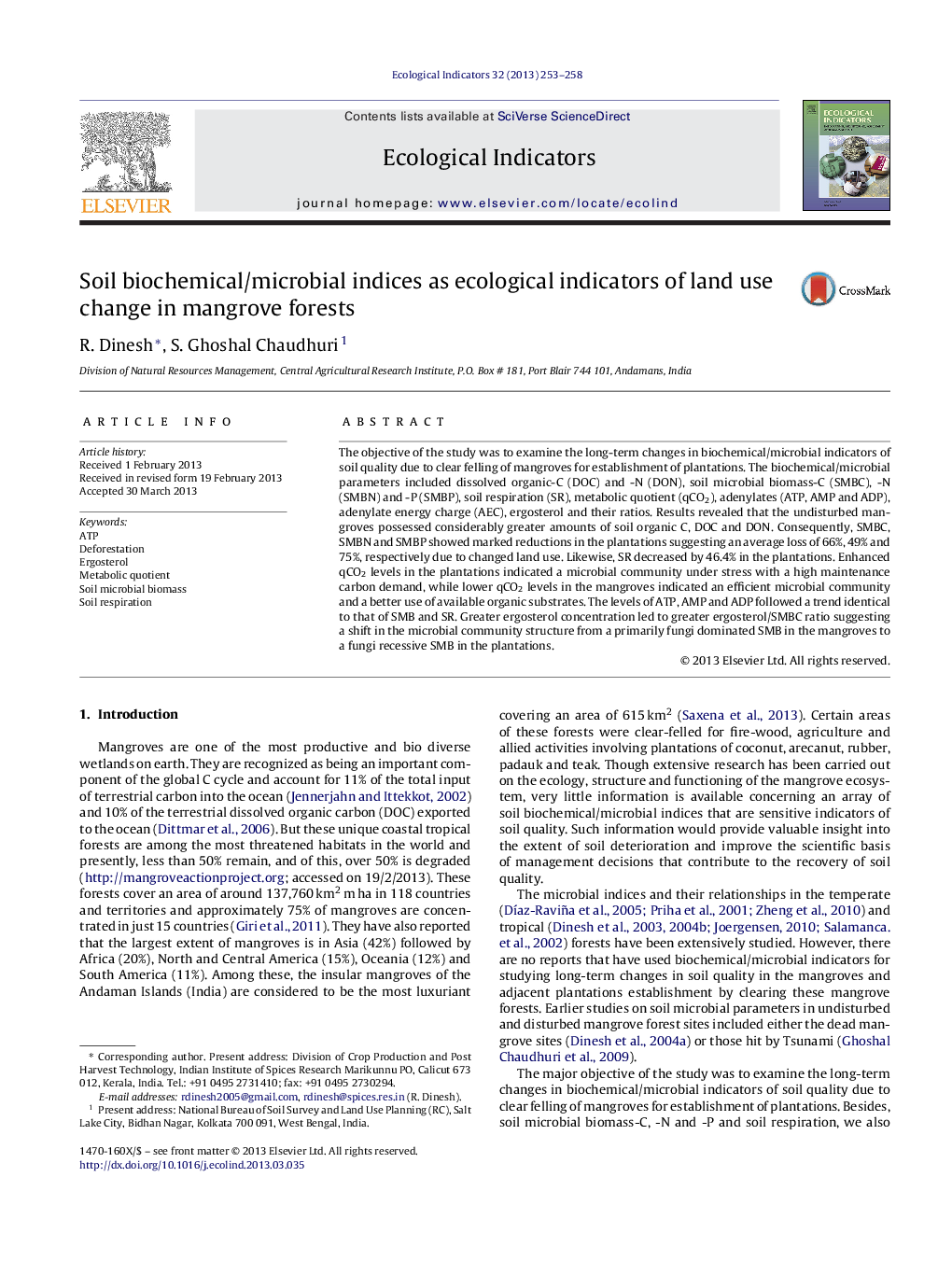| Article ID | Journal | Published Year | Pages | File Type |
|---|---|---|---|---|
| 4373407 | Ecological Indicators | 2013 | 6 Pages |
•Soil microbial biomass and activity was significantly reduced due to changed land use.•Lower qCO2 levels in the mangrove soils indicated an efficient microbial community and better use of organic substrates.•Greater ergosterol/microbial biomass C ratio suggested that fungi dominated the microbial biomass in these soils.
The objective of the study was to examine the long-term changes in biochemical/microbial indicators of soil quality due to clear felling of mangroves for establishment of plantations. The biochemical/microbial parameters included dissolved organic-C (DOC) and -N (DON), soil microbial biomass-C (SMBC), -N (SMBN) and -P (SMBP), soil respiration (SR), metabolic quotient (qCO2), adenylates (ATP, AMP and ADP), adenylate energy charge (AEC), ergosterol and their ratios. Results revealed that the undisturbed mangroves possessed considerably greater amounts of soil organic C, DOC and DON. Consequently, SMBC, SMBN and SMBP showed marked reductions in the plantations suggesting an average loss of 66%, 49% and 75%, respectively due to changed land use. Likewise, SR decreased by 46.4% in the plantations. Enhanced qCO2 levels in the plantations indicated a microbial community under stress with a high maintenance carbon demand, while lower qCO2 levels in the mangroves indicated an efficient microbial community and a better use of available organic substrates. The levels of ATP, AMP and ADP followed a trend identical to that of SMB and SR. Greater ergosterol concentration led to greater ergosterol/SMBC ratio suggesting a shift in the microbial community structure from a primarily fungi dominated SMB in the mangroves to a fungi recessive SMB in the plantations.
